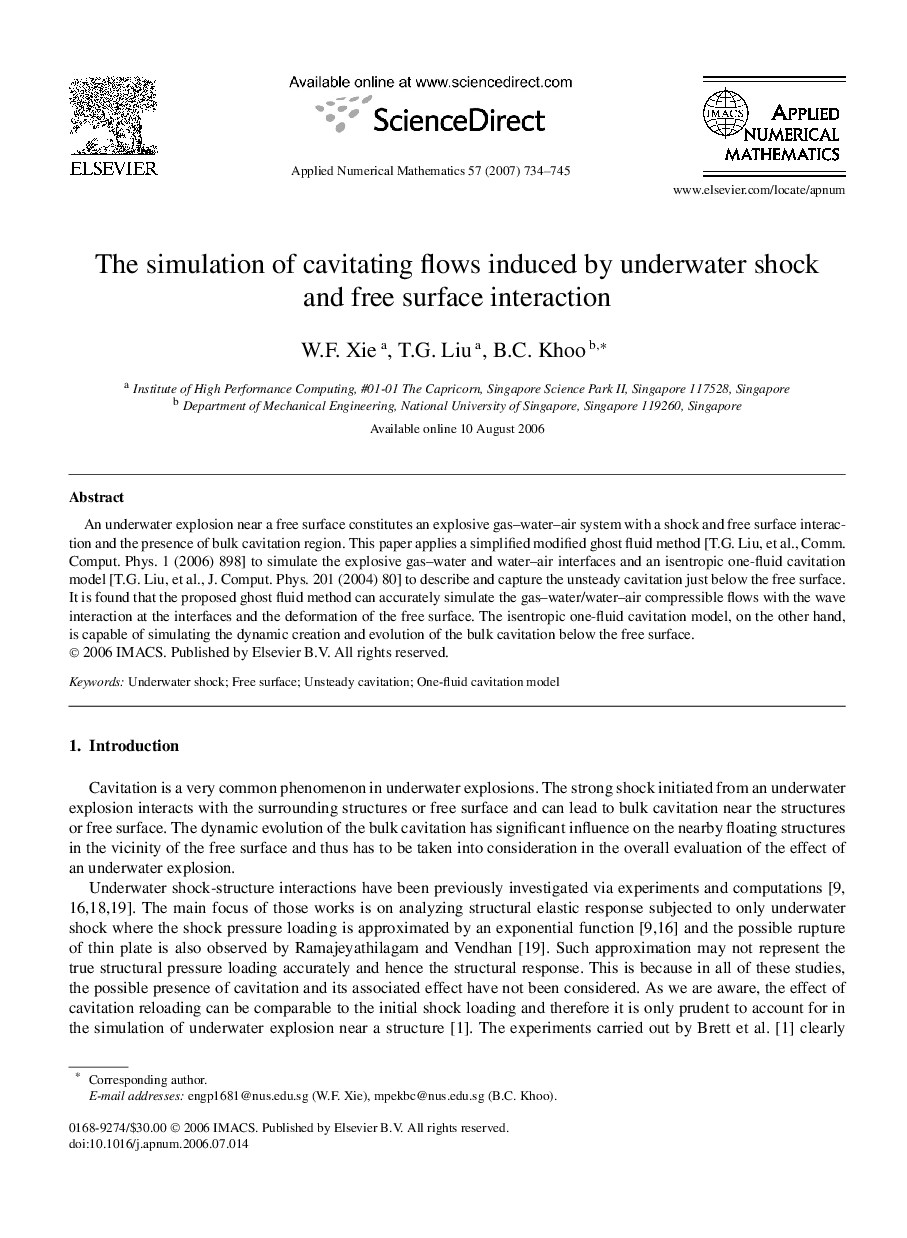| کد مقاله | کد نشریه | سال انتشار | مقاله انگلیسی | نسخه تمام متن |
|---|---|---|---|---|
| 4646144 | 1632215 | 2007 | 12 صفحه PDF | دانلود رایگان |

An underwater explosion near a free surface constitutes an explosive gas–water–air system with a shock and free surface interaction and the presence of bulk cavitation region. This paper applies a simplified modified ghost fluid method [T.G. Liu, et al., Comm. Comput. Phys. 1 (2006) 898] to simulate the explosive gas–water and water–air interfaces and an isentropic one-fluid cavitation model [T.G. Liu, et al., J. Comput. Phys. 201 (2004) 80] to describe and capture the unsteady cavitation just below the free surface. It is found that the proposed ghost fluid method can accurately simulate the gas–water/water–air compressible flows with the wave interaction at the interfaces and the deformation of the free surface. The isentropic one-fluid cavitation model, on the other hand, is capable of simulating the dynamic creation and evolution of the bulk cavitation below the free surface.
Journal: Applied Numerical Mathematics - Volume 57, Issues 5–7, May 2007, Pages 734-745